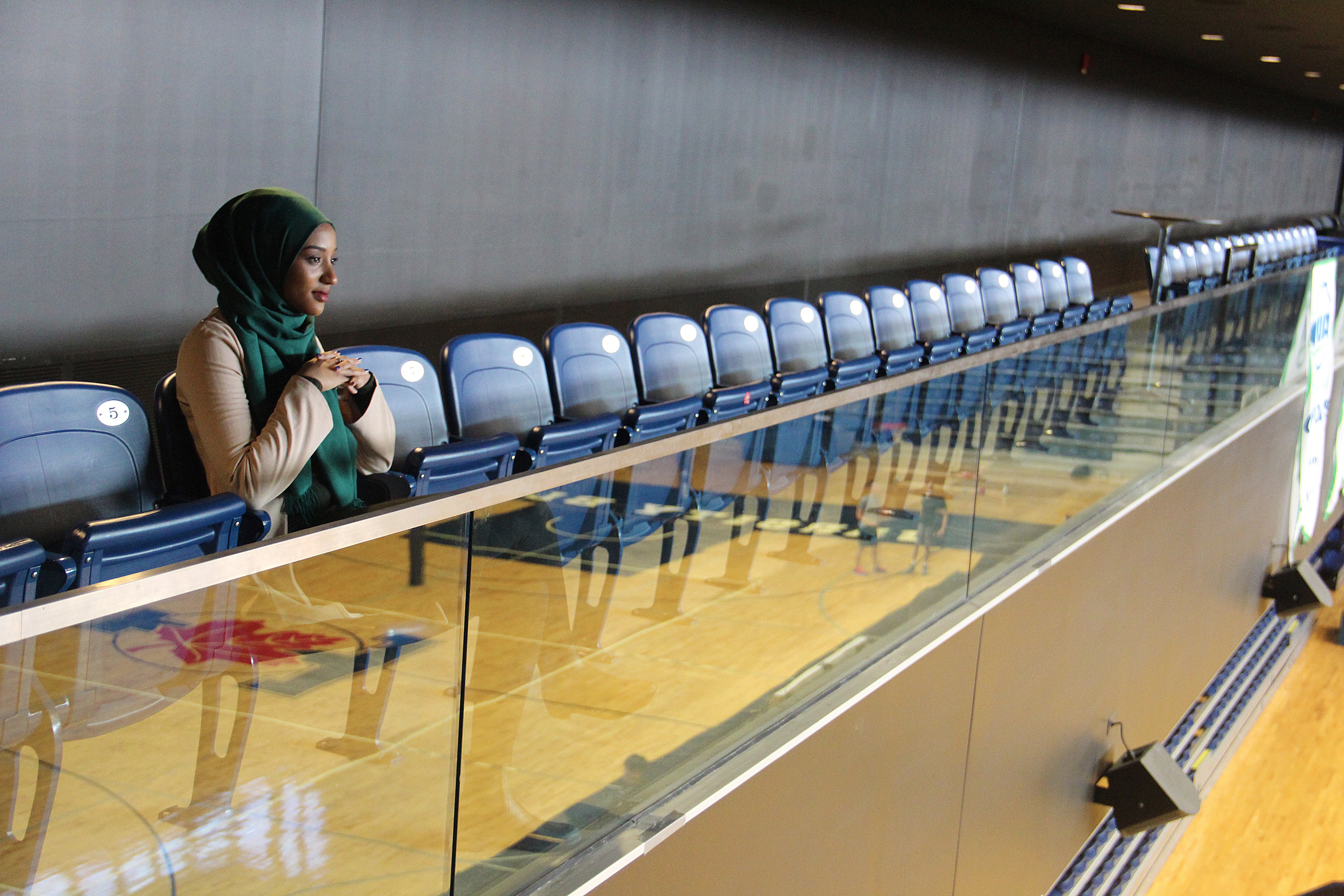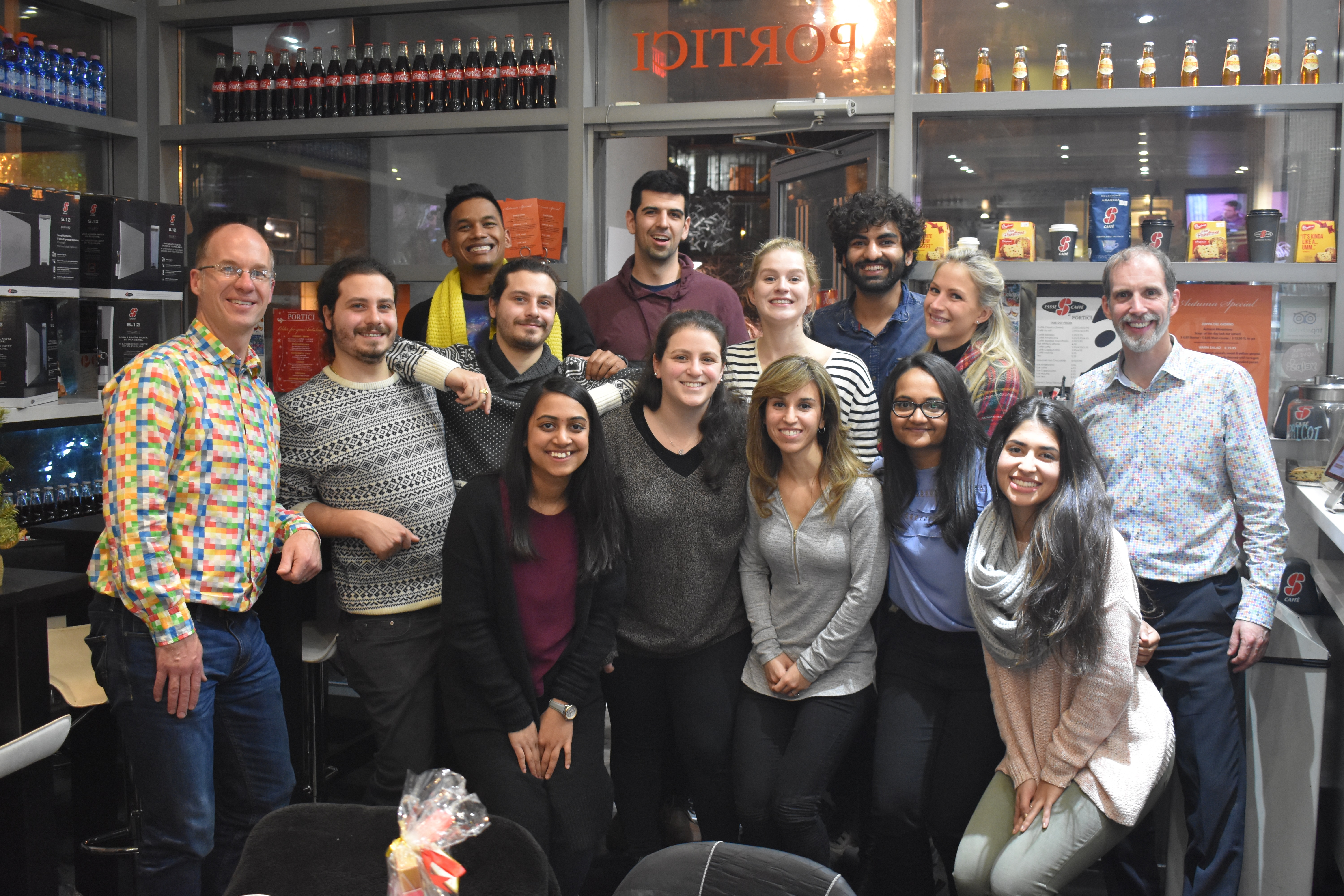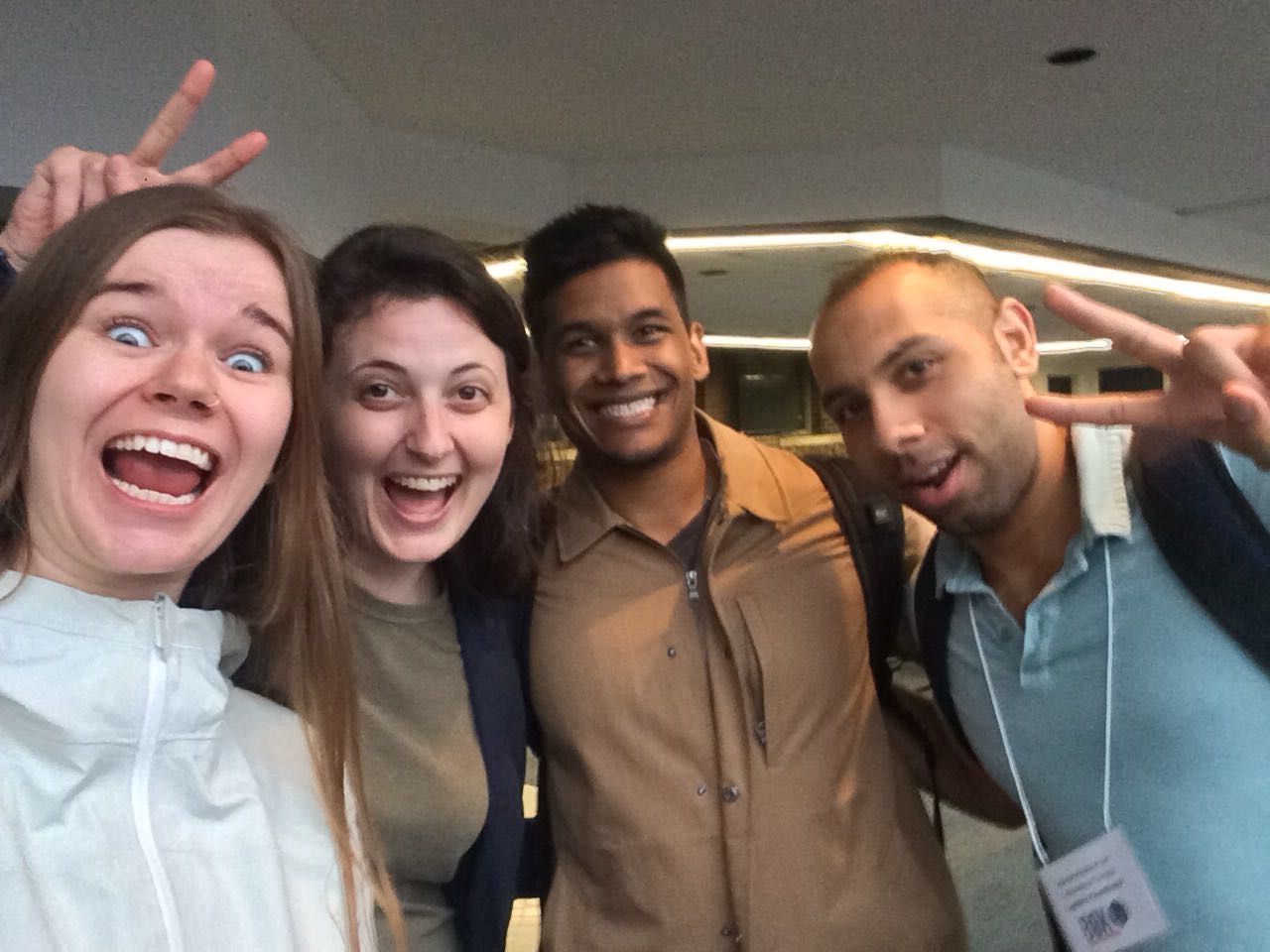A future nurse, an investigator of faith in sport, an engineer converted to kinesiology and a kinesiologist turning to art, these are some of the students of the University of Toronto’s Faculty of Kinesiology and Physical Education graduating this fall. We spoke to them about their experience of studying kinesiology at U of T, how it shaped them and what they plan on doing next.

Laksiitha Balasurbramaniam shows off her R. Tait McKenzie Society Award (photo provided by LB)
Laksiitha Balasubramaniam completed her undergraduate degree in kinesiology before starting in U of T’s nursing program in September. Growing up, she played badminton and volleyball and watched soccer religiously, but she always saw sport as more than a recreational activity.
“It has the power to unite diverse groups of individuals through celebrating the dedication and achievements of athletes,” says Balasubramaniam.
Kinesiology appealed to her because it is a field that combines a physical understanding of the human body with psychological and sociological approaches.
“I have always believed the body and the mind are inextricably tied, as evident through the benefits of physical activity on psychological well-being or the negative consequences of stressful environments on the body,” says Balasubramaniam.
Kinesiology provided her with the opportunity to explore pressing issues of today through an interdisciplinary lens.
“Without limiting myself to study problems from only a physical or psychological perspective, I was able to build my critical thinking skills and creativity in problem solving more than I could ever imagine,” she says.
Balasubramaniam believes this interdisciplinary understanding of health makes her better prepared to be an advocate of health.
“As I continue in my education, pursuing a degree in nursing at U of T, this knowledge is extremely valuable. In order to best support individuals and cater care to their unique needs, knowledge about the physical body is not enough. Being aware of social and cultural factors is important and the training at kinesiology has prepared me to always consider these factors,” she says.
Balasubramaniam also appreciated the smaller size of the Faculty and classes, which allowed her to practice her presentation skills and group work in multiple courses within a close-knit community.
“In nursing and any other profession, interpersonal skills, such as collaboration, are essential and kinesiology gave us multiple opportunities to enhance these skills. Beyond the supportive community at kinesiology, I also had access to the wider resources of U of T. This gave me the best of both worlds—attending a large, diverse university with the feel of a smaller institution,” she says.
Through the Undergraduate Research Opportunity Program, Balasubramaniam worked with KPE Professor Catherine Sabiston on a project examining body image in young girls.
“The experience was extremely valuable as it provided firsthand insight into the research process,” she says.
The collaborative and friendly atmosphere among the faculty members gave her the chance to explore research in multiple other labs in the Faculty, witnessing studies on a range of topics, from nutrition and performance to how perceptions of health differ by cultures.
“This really allowed me to appreciate the broadness of kinesiology,” she says.

Asma Khalil looks on at a basketball practice in the Kimel Family Field House at Goldring Centre (photo by Joel Jackson)
Asma Khalil is a first year PhD student in KPE. This Thursday, she picked up her master’s degree diploma in kinesiology for her research exploring the ways in which young, visibly Muslim women may experience inclusion or alienation due to involvement in competitive sport in Ontario.
“Specifically, I looked at issues of identity negotiation, social support and the influence of dominant discourses about Western sport and Islam,” she says.
Khalil’s desire to study this topic stemmed from her experience of navigating sport and physical activity opportunities as a Muslim woman, as well as a desire to hear more diverse, complex narratives from and about this community.
“Throughout my undergraduate experience in the faculty, I was exposed to different ways of understanding physical activity, sport and health,” says Khalil
.
“The interdisciplinary nature of our Faculty is very unique and gave me the tools to bridge the behavioural and physical cultural streams to provide a more nuanced understanding of how Muslim women experience sport."
For her PhD, she will focus more broadly on physical activity and health, though she hopes to continue working with the Muslim community.
“I am particularly interested in the experiences of Black, Muslim women and hope to do some of my research in my native country of Sudan,” she says.
This is Khalil’s seventh year in the Faculty, having completed four years of undergraduate studies and two years of a master’s degree under the supervision of KPE Assistant Professor Katherine Tamminen. She admits she never thought she would stay for so long when she first started out at U of T.
“However, this Faculty has provided me with countless opportunities and experiences that have enriched my educational, professional and personal growth,” she says.
“Specifically, working with Equity Movement, a student-led group run out of the Faculty, for six years was instrumental in igniting my passion for community and advocacy work. Planning the Equity Retreat for four years remains one of my favourite (and most challenging) experience during my time at KPE.

Animesh Kumawat is sporting a beard in the back row of this photo with his lab group, which he describes as his biggest academic support system in grad school (photo provided by AK)
As a competitive swimmer, Animesh Kumawat was always fascinated with the human body and its ability to execute and learn skilled movements. He got his undergraduate degree in electrical engineering from the Gandhinagar Institute of Technology in India and during that time developed an interest in designing rehabilitation systems, tools to meet a wide range of needs that can assist individuals with mobility, communication, hearing, vision and cognition.
“A couple of internships and projects later, I decided to study motor control to have a holistic understanding and better approach towards motor rehabilitation. When I stumbled across Associate Professor Luc Tremblay's research profile, I knew that KPE's Perceptual-Motor Behavioral lab would be a great fit for my current goals and future ambitions,” says Kumawat.
His master’s research looked into how humans internally plan movements and how they perceive movement error outcomes. Specifically, he investigated the role of proprioception - the sense of the relative position of one's own parts of the body and strength of effort employed in movement, sometimes described as the "sixth sense" - and motor planning in movement endpoint error detection processes.
“The initial transition from engineering to kinesiology was quite challenging, but once I was able to learn things from a different perspective and get involved in research, it all began to fall in place,” says Kumawat.
“Working with students as a Teaching Assistant, working on various projects with interdisciplinary teams and presenting our work at various platforms were some of the experiences that I thoroughly enjoyed and cherished,” he says.
Kumawat is currently taking a break year to finish the publication of all the research projects he was part of, while looking for interesting job opportunities.

Debra Kriger, second from the left, celebrating with some of the Bodies of Knowledge 2018 Steering Committee, Stephanie Woodworth, Gerome Manson and Marcus Waskiw-Ford (photo provided by DK)
With an academic background in public health and epidemiology, Debra Kriger always had a fascination with the social meaning behind various health categories. Her PhD work used an original artistic method called life-sculpting and interviews to unpack how participants made sense of the concept of ‘health risk’, and how they understood the connection between past and future health through their present bodies and social locations. Hart House hosted an art show last March exhibiting her participants’ stories of health risk.
Kriger says she zeroed in on her research, like many graduate students, in a fairly wayward way.
“A scholar at another institution listened to my interests and guided me towards my current supervisor, KPE Associate Professor Margaret MacNeill, who encouraged me to follow my curiosities and questions wherever they led,” she says.
“My project ended up looking very different from what it was when I started, and it’s something of which I’m proud that reminds me of all the support, energies and inputs that went into my arrival at this point in time. It certainly, as the saying goes, takes a village.”
She never thought she would end up in kinesiology and felt very much like an outsider coming in.
“There are times I still do, but, after five years here, I often joke that I at least make more sports analogies,” says Kriger.
“I’ve found a home in kinesiology and have come to appreciate its wide and interdisciplinary scholarship. As in any graduate program, there are always ups and downs, but the people in kinesiology have made this an overall incredible experience.”
Kriger worked with her friends to co-ordinate a conference and says she learned how to become a better teacher, tried out new approaches on an international scale, gained lots of substantive knowledge, such as what ‘biopedagogy’ or ‘neoliberalism’ mean, and even gave lacrosse and archery a go.
“It’s hard to pinpoint specific experiences as the best ones; so much happens in five years. It’s easy, however, to say, truly and without-a-doubt that the most positive part of this graduate degree has been, and will always be, the people with whom I’ve journeyed,” she says.
Kriger will be taking the opportunity to slow down and reflect after what she calls a long, fantastic and challenging project.
“I’ll be working on my methods manual and side research on hairstyles, continuing to develop my life-sculpting workshop, teaching at FKPE, focusing on loved ones and thinking a little on what comes after.”

Debra Kriger's exhibit at Hart House (photo provided by DK)
